Brac Croatia – Exploring the Dalmatian Isle on an eBike
Yesterday I wrote about a perfect day of cycling on the island of Korcula after which we boarded our boat, the Azimut at Prigradica and motored for two hours to Sumartin on the island of Brac, Croatia where we spent the night. This was taken as we approached Sumartin in the late afternoon. The sunny skies continued, but the forecast is not good. So far on this trip we have alternated between good and bad weather days and tomorrow looks like the bad weather will take its turn again.
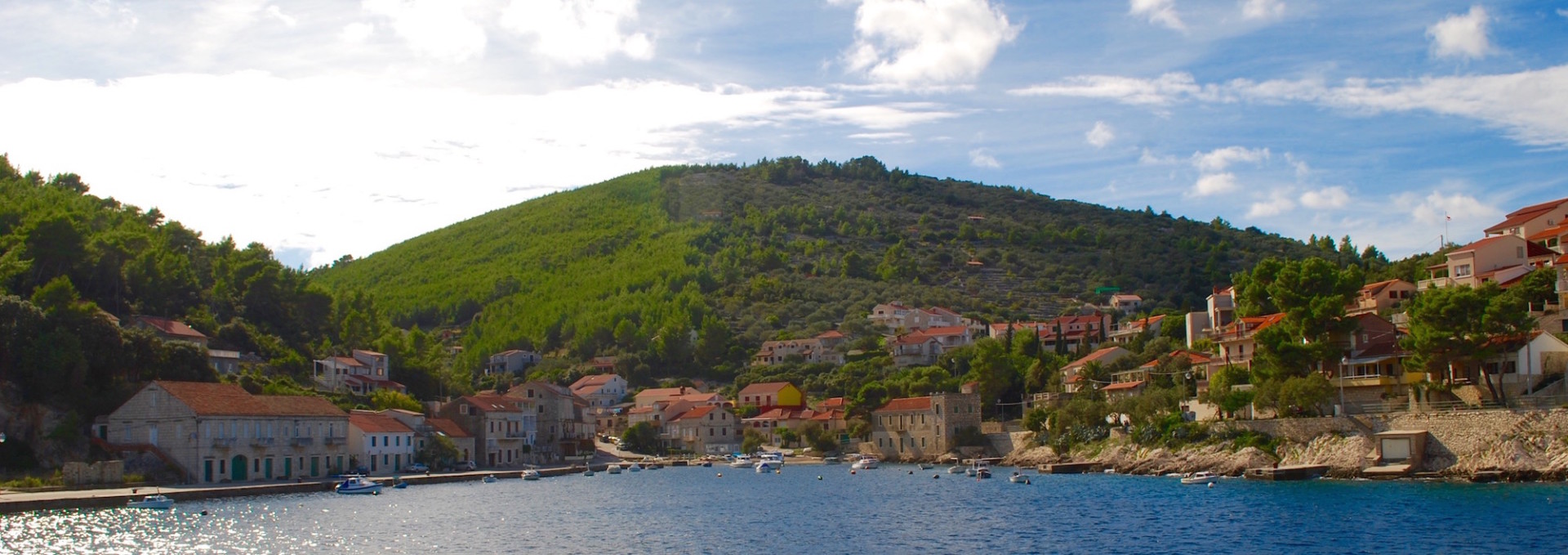
One thing I’ve failed to mention so far is the nightly sessions with our guide Mario on all matters Croatian. The first lesson was on using the simplest terms in the Croatian language to help us get by at the local shops and restaurants. Usually there’s only five words I need to know – ‘please’, ‘thank you’, ‘beer’, ‘wine’ and ‘more’. And depending on how many times I use the latter word, “Where is the toilet?” is also useful. Croatian is not significantly different than Serbian or Bosnian – they are all really dialects of a common south slav language and Mario says the three groups can generally understand each other.
Our second session was on Croatian geography and in a third Mario taught us how to play a common Croatian betting game using six dice after which Alison and I proceeded to win every game. Maybe we should head for the nearest craps table.
Most people are familiar with the famous episode of Fawlty Towers where Basil has a number of German tourists come to his establishment and admonishes his staff not to mention the war, with predictably disastrous results. Well, most guide books to Croatia repeat this mantra and so I haven’t raised it, but Mario promises on the last session to give his views on recent Croatian history. I’m looking forward to it and will dutifully report what he has to say.
I am woken in the middle of the night by the extreme rocking of the boat, even though we are securely moored to the promenade in Sumartin. The promised bad weather has arrived and by dawn it’s pretty clear that we wouldn’t be going anywhere on the Azimut this morning – even Ulysses would be afraid of these waves. Luckily we are not scheduled to sail, but rather to ride from Sumartin to Pucisca where, with crossed fingers, we’ll await the boat.
Brac Croatia
Brac (pronounced Bratch) is the largest of the islands we will visit on this trip and it has the highest elevation of any of Croatia’s islands (Oh joy). We will begin climbing right outside Sumartin to Selca and then on to Humac which is on the highland plateau, well over 400 metres (1300 feet) high. The only consolation is that it is nowhere near as steep a climb as yesterday’s up Hell Hill on Korcula. So we’re off.

The riding conditions today are in complete contrast to yesterday’s – it’s very windy, overcast and the whole landscape seems to be cloaked in a gray funk which is hard not to absorb. Alison and I soon leave our travel companions Cindy, Gary and Mario behind and we stick together on the long climb up first to Selca from where there would be a great view if we could see anything. From there things flatten out and it’s a generally uninteresting ride to the hamlet of Humac which appears to be deserted. As instructed we wait at the bus stop for the rest to catch up and when they do, we discuss whether or not to ride down to the resort town of Bol on the south coast. You can see it on the bottom of the map. This would involve having to climb up to Humac from the coast on what Mario says is a very steep ascent. The alternative is to go straight to Pucisca where we can visit one of the few stone cutting schools left in the world. We all opt for culture over extra exertion and push on first to Praznice and then to Pucisca.
Pucisca, Croatia
The ride downhill to Pucisca on Brac is the steepest descent we have made and at 7 kms. (4 miles) it’s pretty damn exciting with one hairpin turn after another going down, down, down like water swirling around a drain. It is famous for its quarry which has been worked since ancient times and still is today. The town, located at the head of a long narrow bay, is quite unique in appearance. All the buildings are made of stone and many have white roofs made of stone in contrast to the usual red or orange tiles. The church is the predominant architectural landmark and has a very unusual onion shaped dome, something I associate more with orthodox than Catholic churches. Here is a photo I got from the tourism site which is an aerial shot of the town.
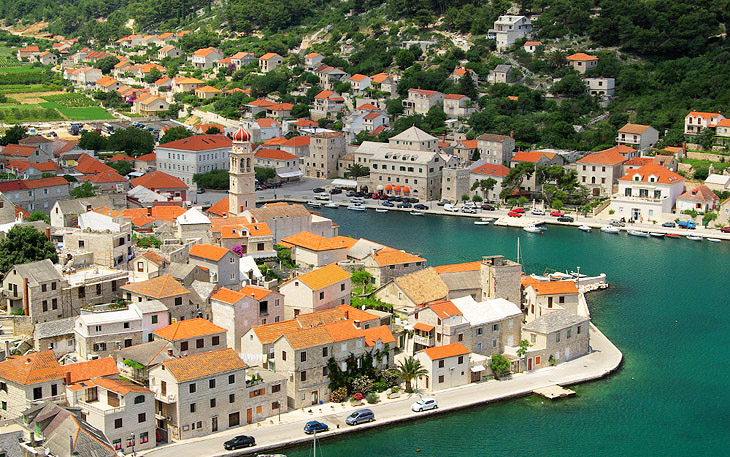
At Humac, Mario was able to confirm by phone that the Azimut has indeed been able to set sail and should be in Pucisca soon and lo and behold there she is, moored on the far side of of the harbour. After lunch on board, we have an hour or so to explore before touring the stone cutting school which is literally right beside where we are moored.
It’s raining slightly so Alison declines coming with me along the waterfront and out to the mouth of the bay on a dirt road that’s getting a bit muddy. At the end is a small lighthouse and across the way I can see the famous quarry from which stone was used to build Diocletian’s Palace in Split and St. James Cathedral in Sibenik. There’s even some of it in the U.S. Capitol building. Here is basically what you can see from the other side of the bay in this public domain photo.
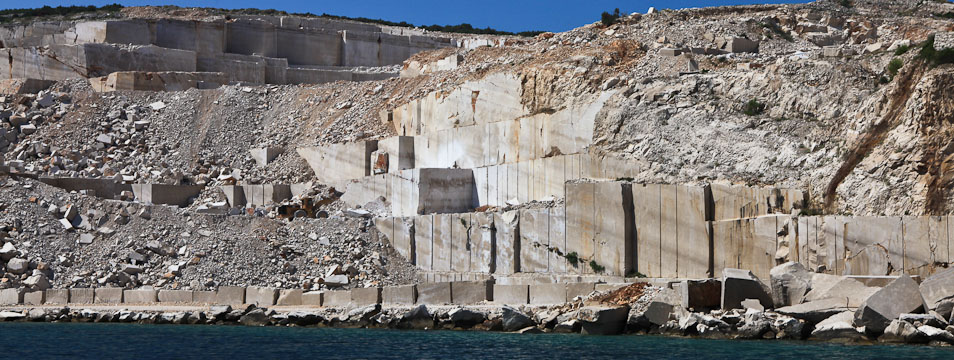
Returning to the boat I picked up Alison and we proceeded to explore Pucisca on foot as the rain was mostly stopped. It’s a very interesting place where no building materials other than stone appear to be permitted. As we combed the tiny alleyways that lead up from the harbour we came across numerous houses being constructed that looked exactly like the old ones. Here are a couple of shots from different angles. You can see how dark the skies are.
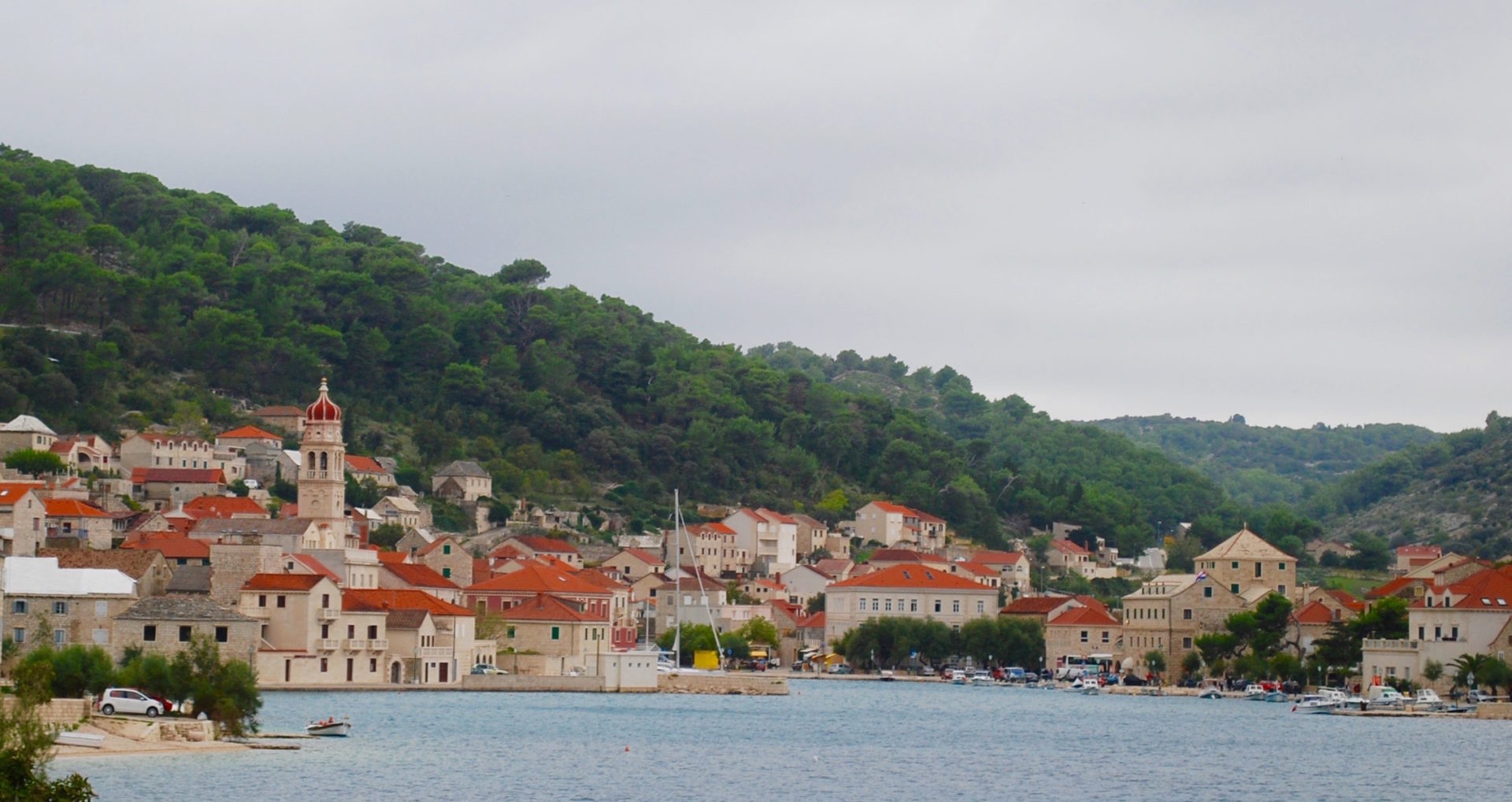
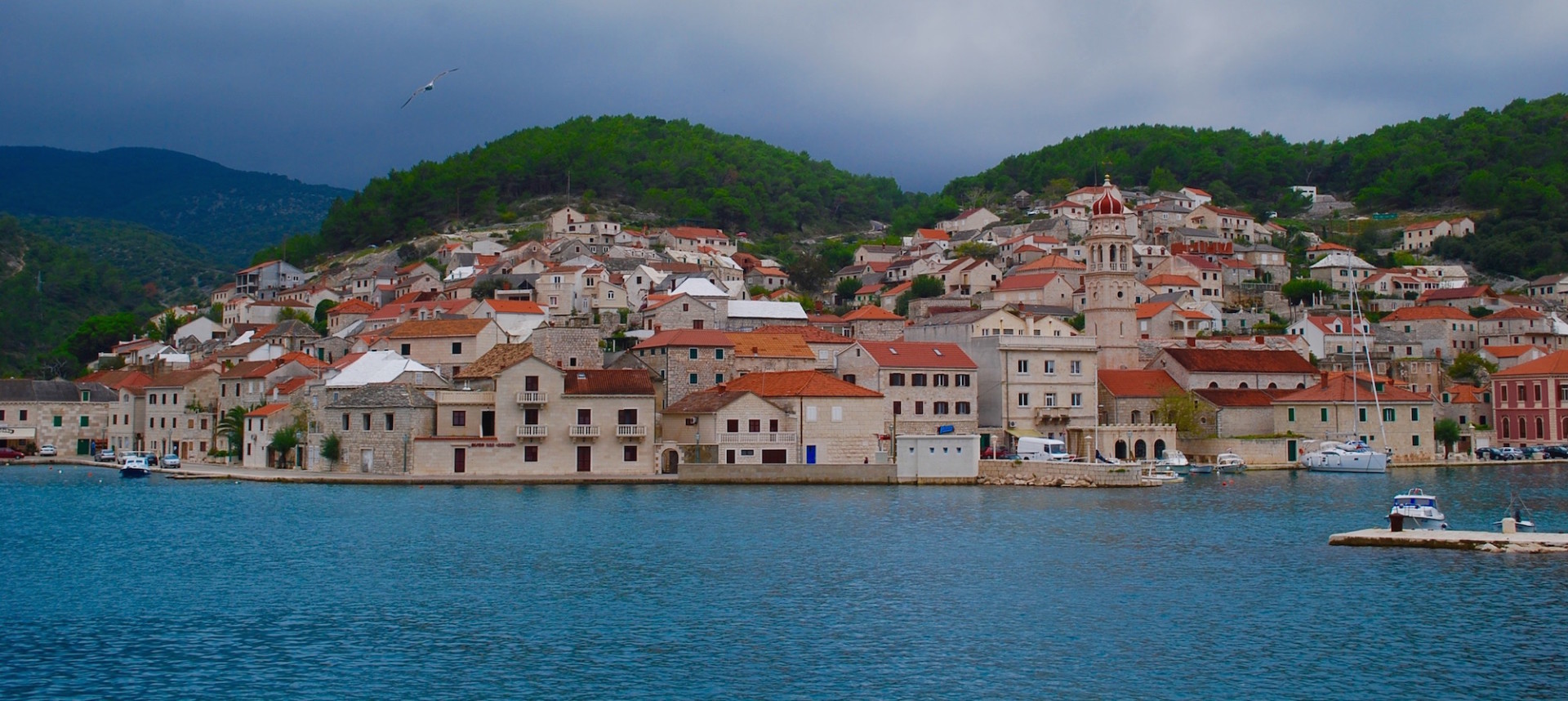
The church that dominates the skyline is St. Jerome and it is open to visitors without charge.
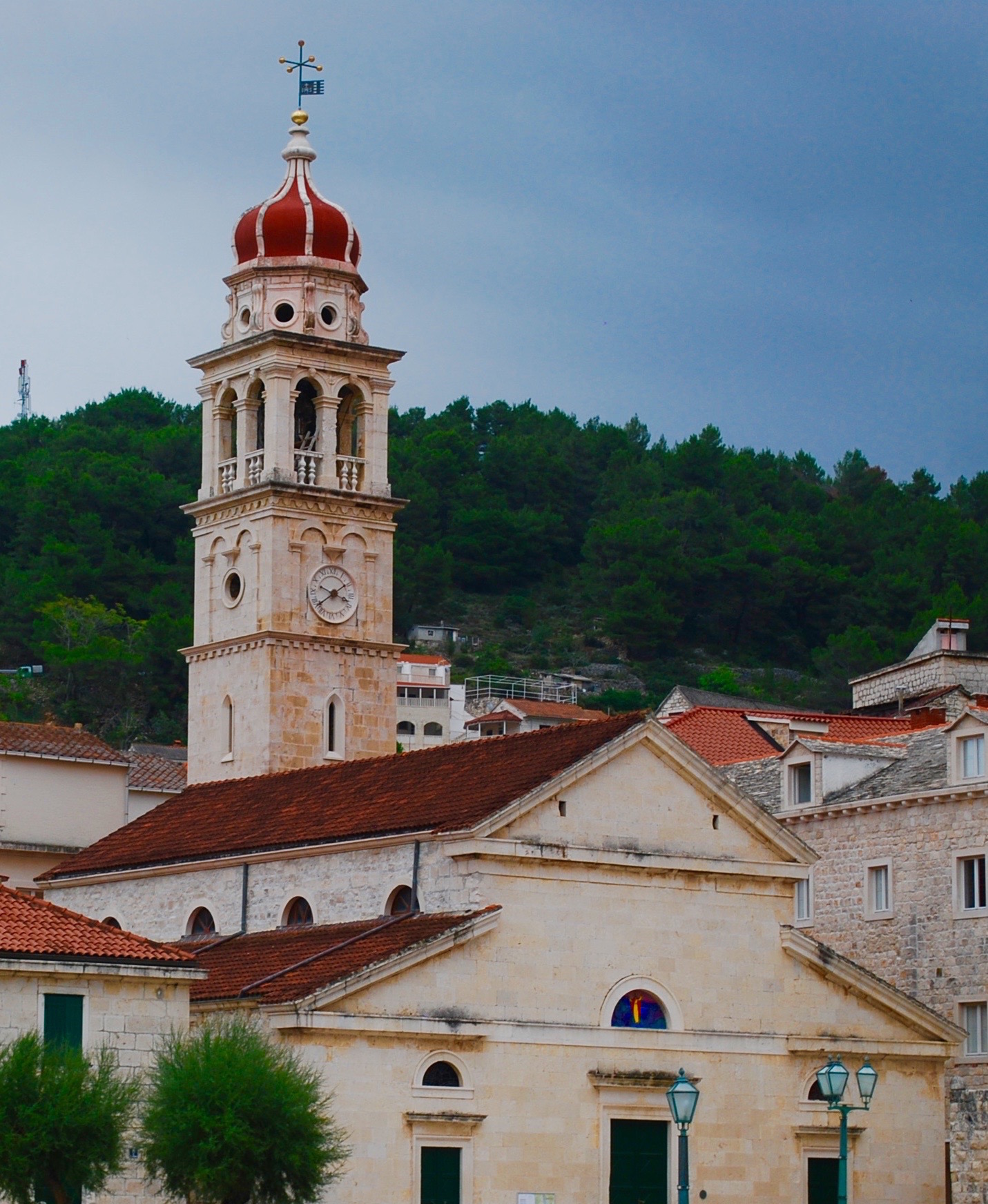
Inside the church there is some very nice modern stained glass including this Omega that represents one half of the alpha and omega or the beginning and the end that Jesus characterized himself as in Revelation 22.13 I am the Alpha and the Omega, the First and the Last, the Beginning and the End.
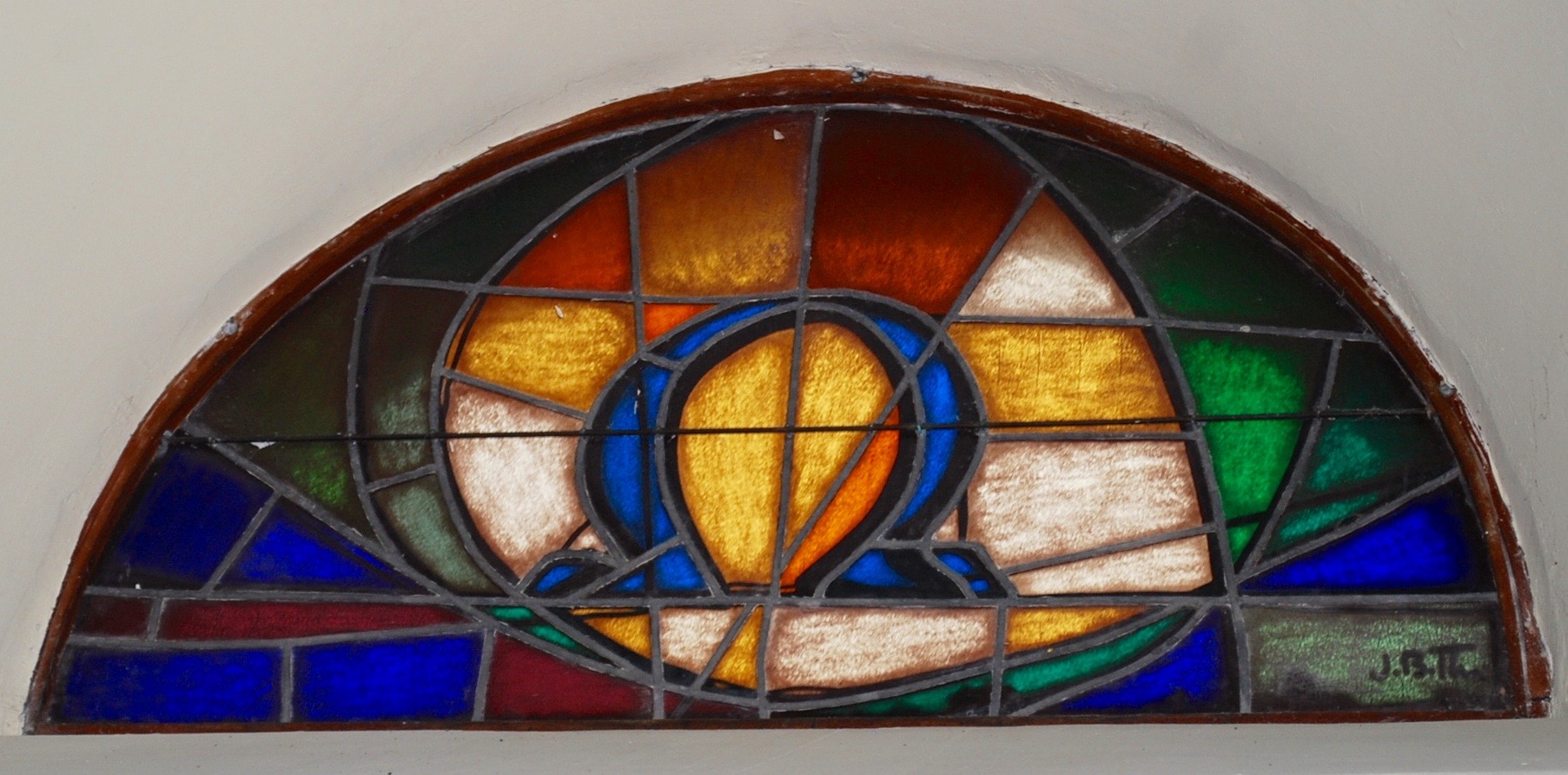
There is also this very ornate chandelier in what is otherwise a fairly austere interior.
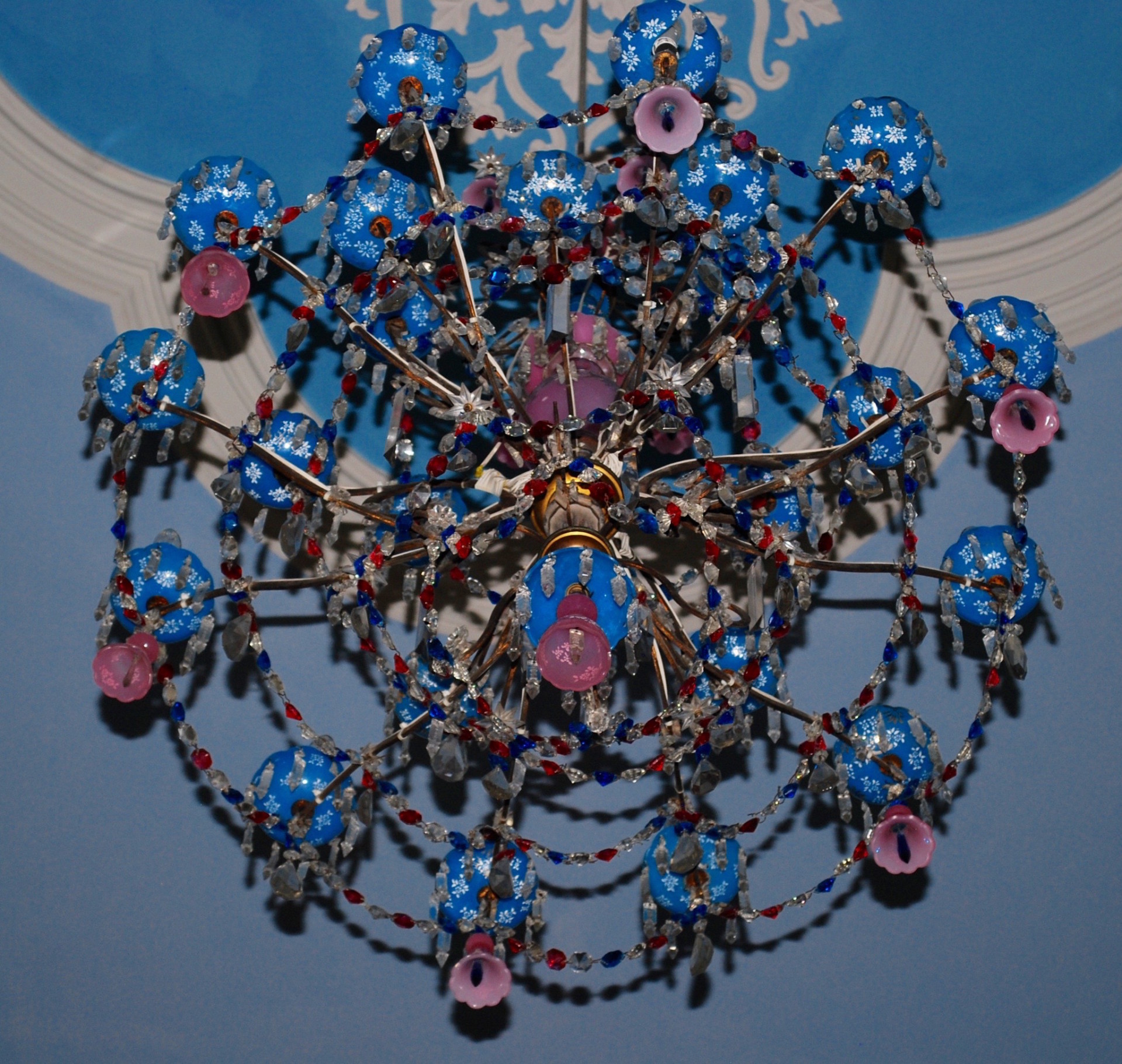
After visiting St. Jerome it was time to return to the boat and join Mario, Cindy and Gary on a tour of the stone cutting school. As I mentioned it was just beside where the Azimut was moored. As you can see the exterior features a number of different styles of window which I presume the students would be expected to master.
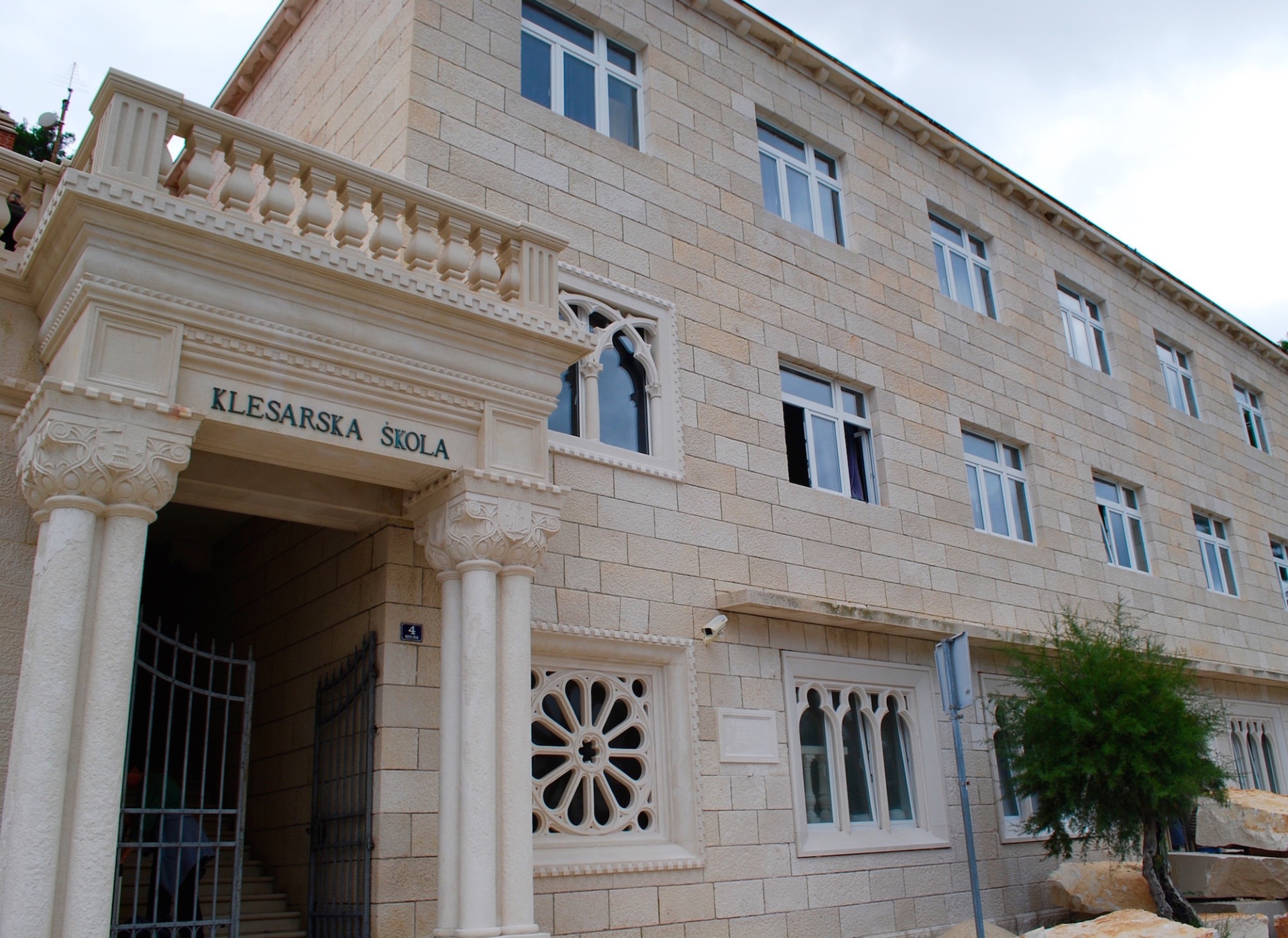
We were met inside by Prof. Denis Nizetic, the headmaster who gave us the lowdown on this very surprising institution. It was founded in 1909 to preserve the craft of stone cutting which has been part of traditional Croatian architecture since at least the Greek times. It operates as the equivalent of a private boarding school where students come from all over to Croatia to learn the trade over a three year stay. Today there are eighty-five students of which three are girls and they will all leave with the ability to craft beautiful things out of stone using only hand tools.
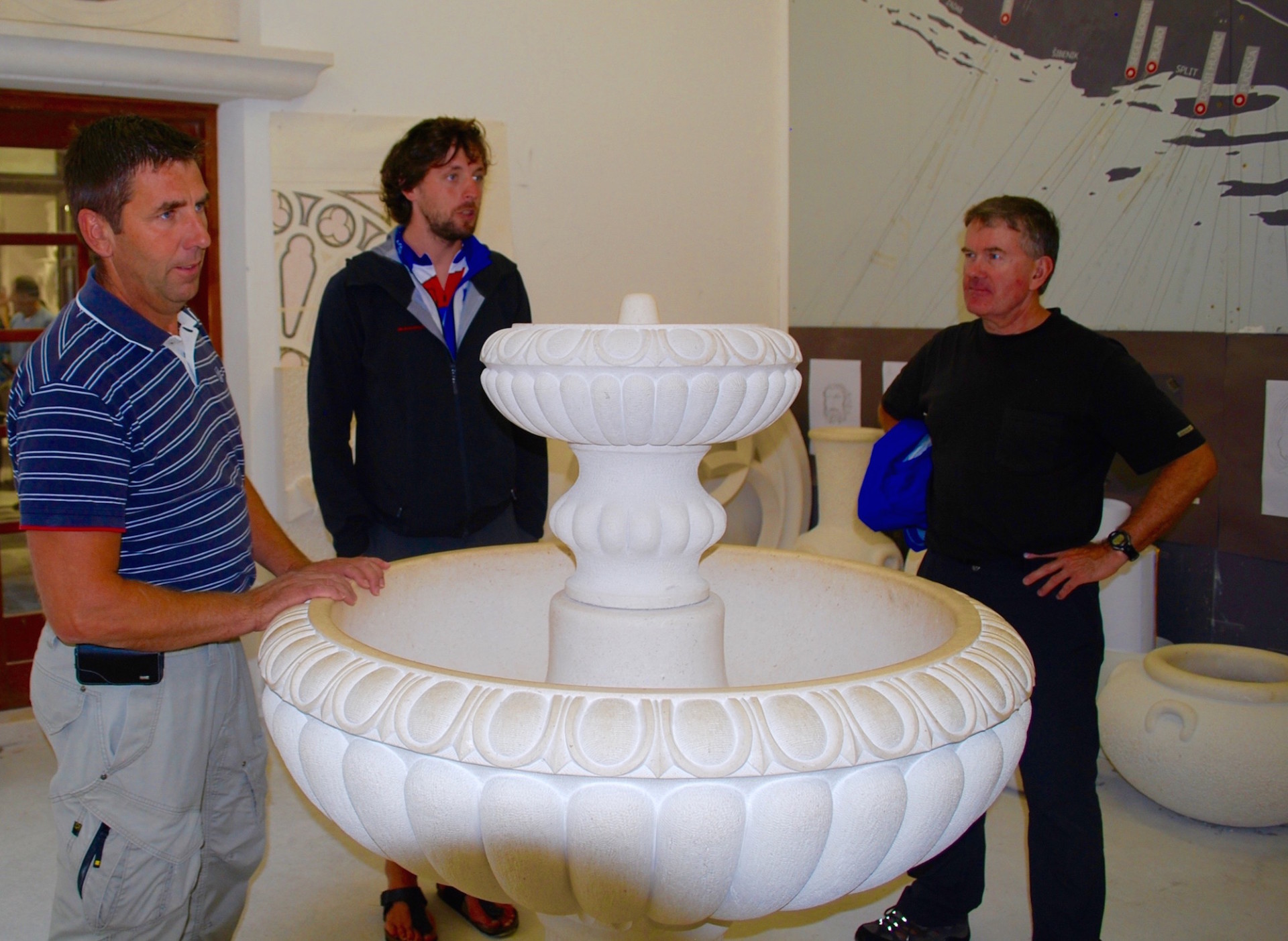
The large common work area has a lot of enthusiastic, even boisterous, teenagers going about their business.
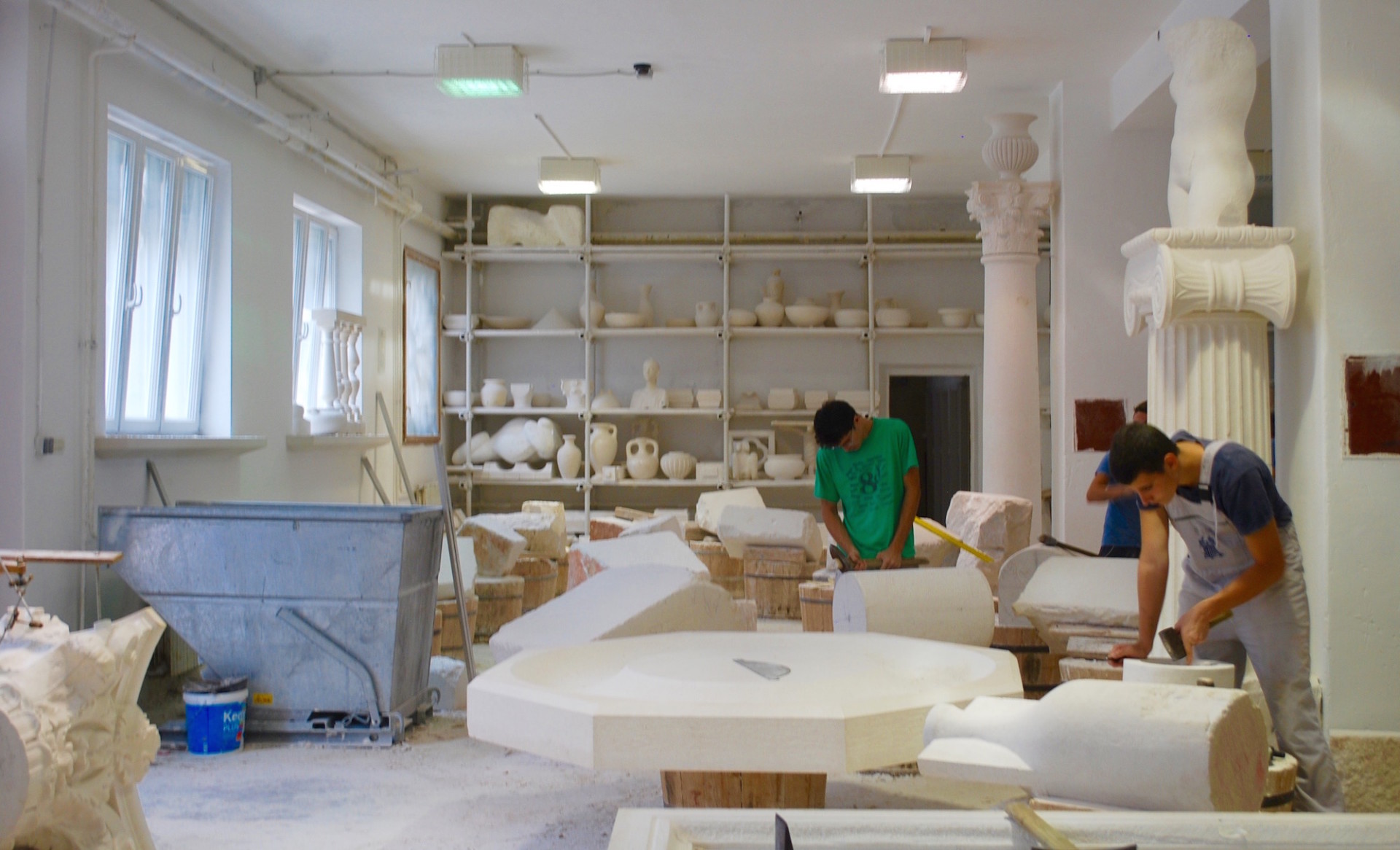
I am kind of surprised that many of them aren’t wearing safety glasses. I would have thought this would be one trade where they were essential.
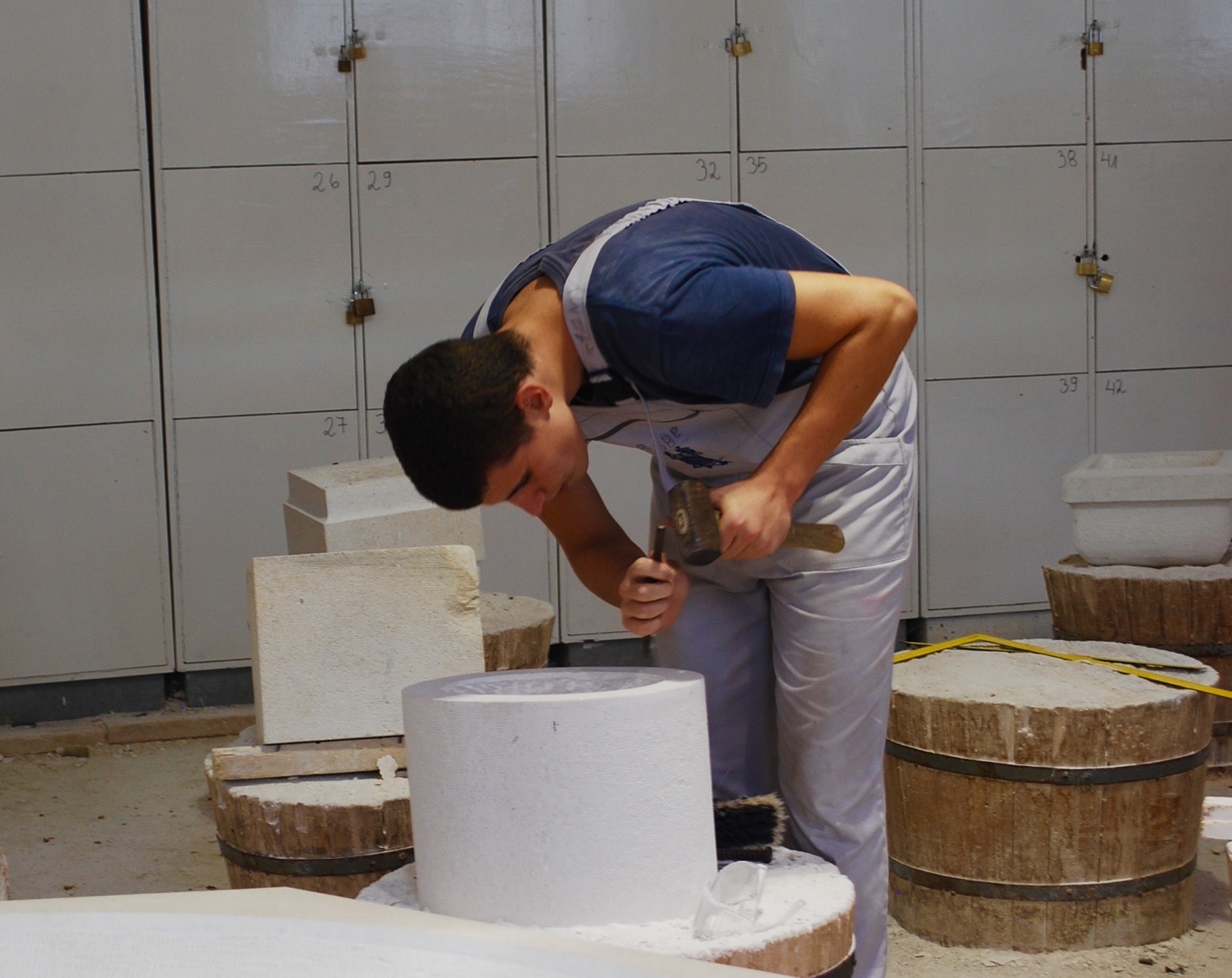
While nobody’s looking I decide to try my hand at it. It’s never too late to learn, but given my general lack of patience I suspect I would flunk out pretty early on. I’ll stick to writing about it.
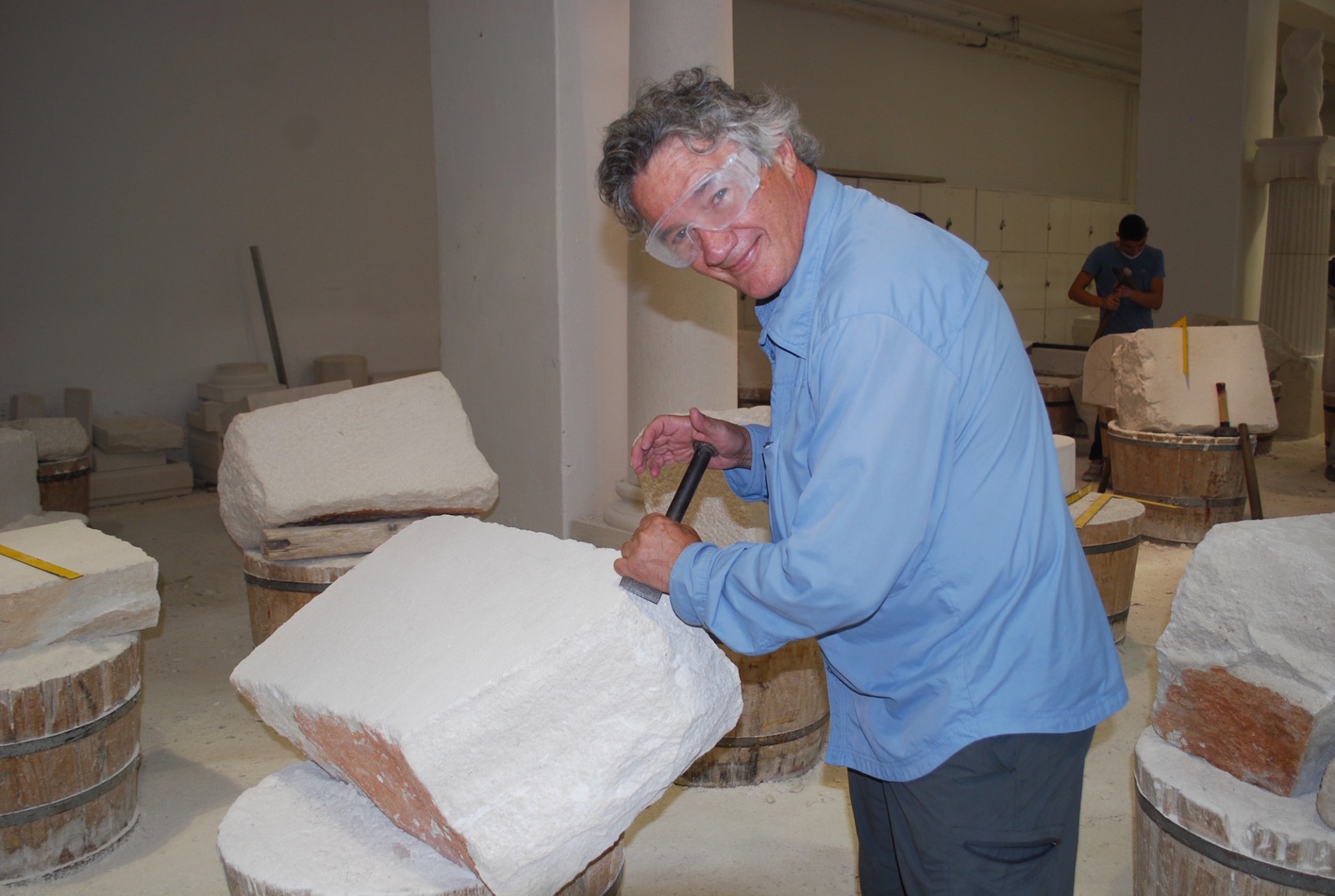
A group of Slovenians arrive on a bus tour and we cut our visit short as they literally mob the place.
Instead of eating on the boat that night Alison and I decided to try a place we saw earlier in the day. Pizzeria Marin has only four tables and when we got there only one was open, the other three occupied by elderly men playing cards. A number of younger men were standing chatting at the bar. Alison was the only woman in the place except for the owner who acted as server and pizza maker. We ordered a litre of local domestic wine and a capricola pizza along with some olives to snack on. The place has a real wood fired pizza oven and the dough was rolled out, stretched and prepared before our eyes. It was excellent as have been all the pizzas we have tried in Croatia.
The elderly men seemed to know it was time for another shift as they all left and were replaced by a few young couples and a few singles. It was clear that everybody knew each other and that this was a local gathering place. It literally oozed ‘local colour’. After we finished our pizza and wine the lady brought over two complimentary glass of prosek which is not a sedative, but a sweet dessert wine made from posip grapes. It was a nice touch that made us feel that our business, minor as it was, was appreciated. Total bill with tip was 165 kunas. That’s about $31.00 Cdn or $25 US. A very good deal indeed.
Another day in Dalmatia comes to an end on the island of Brac. Tomorrow we are heading for the mainland for some white water rafting on the Cetina River. Won’t you come along?
Here is a link to the Croatia photo gallery with pics from Split to Dubrovnik and all places in between.

